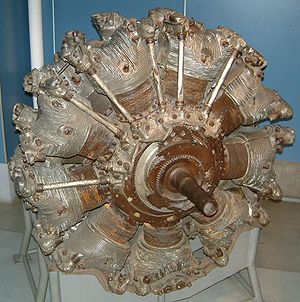

| Homare | |
|---|---|

| |
| Nakajima Homare engine | |
| Type | Piston aircraft engine |
| Manufacturer | Nakajima Aircraft Company |
| Designer | Ryoichi Nakagawa |
| First run | 1941 |
| Major applications | Nakajima Ki-84, Kawanishi N1K-J, Yokosuka P1Y, Nakajima C6N |
| Number built | 9,089 [1] |
| Developed from | Sakae |
The Nakajima Homare (誉, "praise" or, more usually, "honour") was an air-cooled twin-row 18 cylinder radial Japanese aircraft engine manufactured during World War II. Producing almost 2,000 horsepower, it was used widely by both the Imperial Japanese Army and the Imperial Japanese Navy. Given the Navy service designation NK9, the "Homare" was also given the company designation NBA, Army experimental designation Ha-45 (ハ45) or, Army long designation Nakajima Army Type 4 1,900 hp Air-Cooled Radial and, (coincidentally) unified designation code of Ha-45.[2]
Development of the Homare started in 1940, and certification was completed in 1941. It succeeded Nakajima's previous 14 cylinder Sakae (Ha-25) engine, which had its own forward seven cylinders staggered from the rear seven for efficient cooling.
The design was exceptionally compact, with an external diameter of 118 cm, a mere 3 cm larger than the Sakae. With a bore and stroke of 130 mm x 150 mm, it was classified as a short-stroke engine. It was designed to output around 1800 hp (1340 kW), or 100 hp (75 kW) per cylinder. However, the tight design of the engine made it difficult to maintain quality in manufacturing, and unreliability in the field was a significant problem; actual output of early models at altitude was in the range of 1300 hp (970 kW), far below the designed capability. Later models had improved performance, and it became one of the predominant powerplants of Japanese military aircraft in the latter part of the war. A total of 9089 [1] were produced.
Data from TAIC Manual [3]
Comparable engines
Related lists
|
Imperial Japanese Army Air Service aero engine designations
| |
|---|---|
| 1-50 |
|
| 51-100 |
|
| 101-200 |
|
| 200- |
|